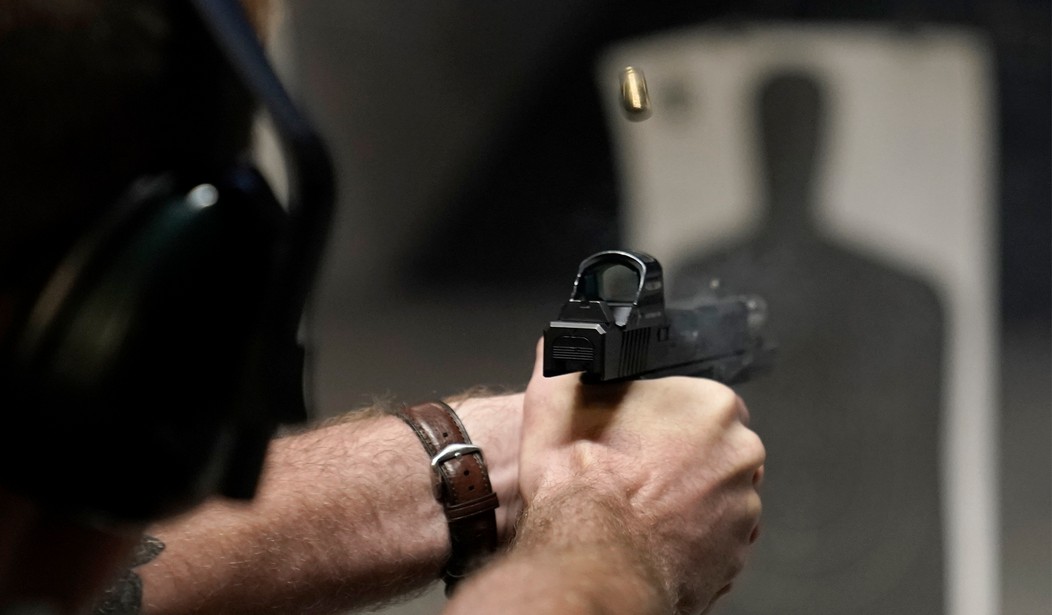A decade ago microstamping was the new shiny object for the gun controllers, but now it could soon be headed for the dustbin of history. Not only has a federal judge in California struck down the state’s microstamping requirement for all new semi-automatic handguns as a violation of the Second Amendment, but states like New York and New Jersey are struggling to find any evidence at all that microstamping is even feasible.
As POLITICO reports, under gun control legislation signed into law in the Garden State last year, New Jersey’s Office of the Attorney General was tasked with investigating how feasible the state’s microstamping mandate would be to implement. Acting AG Matthew Platkin was supposed to deliver the results of that investigation to lawmakers in January of this year, but six months later his report is nowhere to be found.
That investigation was due by January 2023; however, a public records request from POLITICO to the Attorney General’s Office found that there were no responsive findings to the investigation.
In a statement, the Attorney General’s office said that results are expected this summer.
“Work on the microstamping regulations and investigation is proceeding and will be completed as soon as possible,” Attorney General’s office spokesperson Michael Symons said in a statement. “Combatting gun violence is a top priority for Attorney General Platkin, and this includes carefully examining the use of cutting-edge technology like microstamping to bolster those efforts. Every effort has been made to implement the microstamping law as quickly as possible and much of the work necessary to reach that goal has been completed. This includes reviewing the viability of the technology, which is currently underway.”
POLITICO notes that New York has missed its own deadlines, which we covered here at Bearing Arms last month. As the website Gothamist reported:
Last June, Gov. Kathy Hochul and state lawmakers made New York the second state in the country to approve a measure requiring microstamping technology — in which a small, unique code is etched into bullet casings when they’re fired — in new semiautomatic pistols. The bill’s passage came amid worries over instances of gun violence statewide.
But the law came with a major caveat: Four years before the measure takes effect, the state Division of Criminal Justice Services must certify whether microstamping is “technologically viable.” Under the law, that was supposed to happen within 180 days of Hochul’s signature — which put the deadline in December 2022.
But DCJS missed that deadline and continues to study the technology— which means the four-year clock for the law to take effect hasn’t started yet.
Janine Kava, the DCJS spokesperson, said the division’s Office of Forensic Services has convened a working group to make the microstamping determination. The group’s goal is to finish its work and make a final decision before the end of the year, according to Kava.
“To date, this working group has compiled and reviewed scientific materials, held discussions with various stakeholders, and requested additional information,” she said in a statement. “However, given the scope of the inquiry and the volume of data to review, DCJS is continuing to determine whether such technology is viable.”
Gun owners and Second Amendment groups have had fun pointing out the lengthy delays in the quest to determine microstamping’s viability.
They're searching for evidence that microstamping is possible. So in fairness, it does take a really long time to find something that doesn't exist. https://t.co/OTDX009ogi
— Open Source Defense (@opensrcdefense) June 16, 2023
Means that they found microstamping was not viable, but they're being told to find a way to make it viable.
— Goonie Googoo (@gooniegoogoo111) June 16, 2023
Five months behind on assessing a technology that doesn't exist is an achievement.
— Milton Friedman Stan Account (@AndIllWhisperNo) June 16, 2023
If microstamping was a feasible technology we would have learned that long ago. California’s law has been in place for a more than a decade and during that time not a single firearm featuring microstamping has been submitted for approval under the state’s Unsafe Handgun Act, even after the state modified the law to allow for one microstamped location on the firearm instead of two separate set of microstamped identifying codes that are supposed to be imprinted on the shell casing of every round fired from a semi-automatic pistol.
The easiest place to put that unique code would be on a firing pin, but those can be easily swapped out, and imprinting the code on the inside barrel of the gun can be defeated with a simple nail file. While it’s incredibly easy to remove the microstamps from any particular firearm, it’s much more difficult for a gun company to include the microstamping. In fact, it would require major retooling of existing production lines.
It’s not feasible, in other words, and it’s certainly not a practical “tool” for law enforcement. It’s an unfunded mandate on firearm manufacturers, and one that’s intentionally designed to be unfeasible to comply with. I doubt that will be the finding of either New York or New Jersey when their respective reports eventually come out, but with microstamping already under the microscope in the federal judiciary it’s not just the feasibility of the mandate that’s being called into question but their constitutionality as well, and so far the anti-gunners arguments haven’t fared well in court.








Join the conversation as a VIP Member